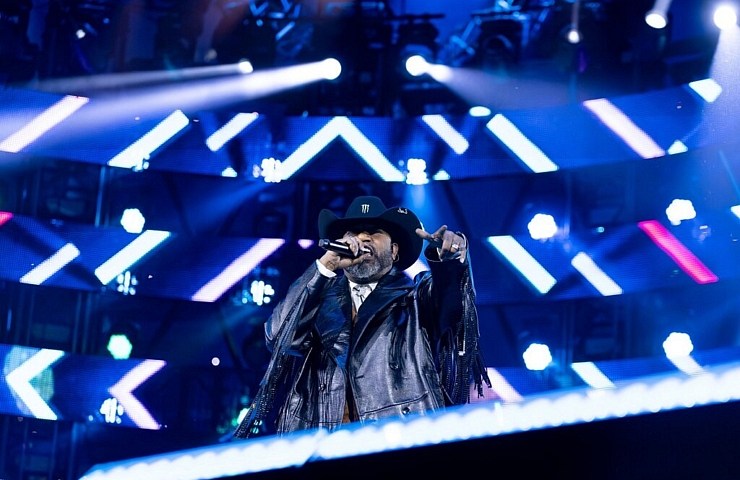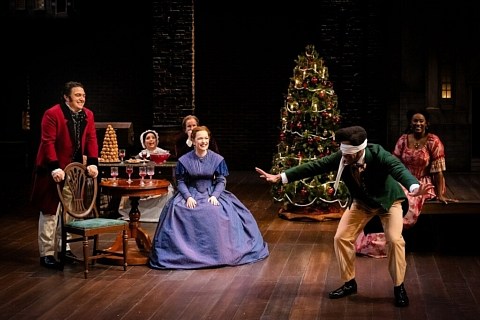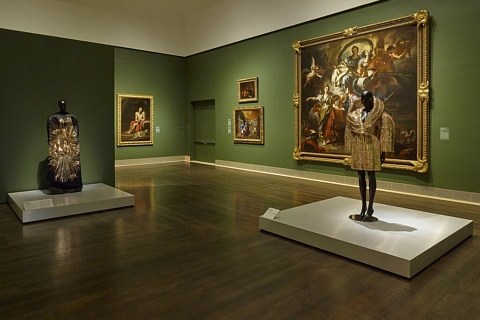Cover Image by Raphael Fernandez
Landmarks tell us where we are and remind us where we are going. In Houston, the Be Someone graffiti is one of the most recognizable landmarks.
It reminds onlookers to make something of themselves with the different opportunities the city has to offer. One of those many opportunities is music.
From post-World War II blues to 21st century hip-hop, this city has been a hub for creation and community, as well as a celebration of talent both inside and outside of the Loop.
Two of the earliest regional styles to develop in the city were blues and jazz.
Bill Quinn opened Quinn Recording, now known as Sugarhill Recording Studio, near the city’s Third Ward in 1941. It is one of the oldest studios in the nation still in operation to this day.
Various blues artists recorded at the studio, most notable being Sam “Lightnin’” Hopkins who made at least 36 songs at the studio and paved the way for other artists to get recorded in the ‘40s and ‘50s.
Since then, the studio has recorded music by Billy Gibbons of ZZ Top, Willie Nelson and Beyoncé Knowles.
As for blues’ continued existence, the original Bronze Peacock Dinner Club now stands as a popular music venue in downtown Houston.
Other social spaces like The Big Easy still carry on the legacy of jazz lounges, hosting new artists of the genre.
The country and rock scenes formed around the same time in Houston, with artists such as Willie Nelson, Kenny Rogers and ZZ Top’s Billy Gibbons spreading their tunes throughout the city.
Rogers was born here and developed his sound through several bands, from doo-wop to jazz and folk, before going solo and signing up in Nashville. Nelson and Gibbons, though separate in the directions their guitars took them, both recorded and performed in Houston.
Country and rock still finds relevance to this day with the Houston Livestock Show and Rodeo’s yearly lineup featuring hard hitters like Luke Bryan and Journey.
Beyoncé, one of Houston’s most iconic artists, has embraced the city’s country roots with tracks such as “Daddy Lessons” on her album “Lemonade” and many of the tracks on her recent album, “Cowboy Carter.”
Another key chapter in Houston’s music history is hip-hop.
With beats and bars from Megan Thee Stallion, Travis Scott and Don Toliver featured on local stations such as KBXX-FM (97.9 The Box), Houston remains a hub for hip-hop.
For those unfamiliar with Houston hip-hop’s past, there were years of buildup. Artists honed their crafts, created spaces for work and pioneered subgenres that led the city to its current status.
Record labels Swishahouse and Rap-A-Lot Records were founded in Houston, setting the stage for creation and distribution in the city.
DJ Screw was one of the forerunners in engineering with his signature “chopped and screwed” style. He would “chop” segments from tracks to emphasize phrases while also slowing down tracks to “screw” with their pace.
DJ Screw’s methods added to the usual routine of sampling, revolutionizing music production in a big way. UGK was also working on their sound out in Port Arthur.
As artists Pimp C and Bun B built momentum, they influenced the city’s sound from 90 miles away with every album.
Houston’s notoriety further bloomed in the 2000s with releases like Mike Jones’ “Still Tippin’” featuring artists Slim Thug and Paul Wall. This particular song is a highlight of UH’s gameday soundtrack.
Through the rest of the early 2000s, several Houston acts have risen to prominence with their own style, and several more artists have been inspired by roots laid down in the ‘90s.
Hip-hop isn’t the only genre to take root in Houston.
Latin music has also had a wide reach in and around the city.
With Texas and Mexico sharing both histories and borders, the two have links that exist to this day like Tex-Mex food and Tejano music.
From the ‘50s to the ‘70s, music halls like the Pan-America Ballroom would be a popular social space for the Hispanic community, and Artists such as Johnny Canales and Little Joe y la Familia helped spread Tejano to a wider audience.
Their work paved the way for Selena to explode in the 90s with her stardom in San Antonio, and three straight performances at the rodeo.
The Houston Livestock Show and Rodeo has also been a hotspot for tejano culture and performances during their “Go Tejano Day” events for over 35 years.
Besides Selena, standout artists have included Ramon Ayala, Jay Perez, Los Tigres Del Norte and recently Grupo Frontera.
There have also been Houston-based artists that have blended hispanic influences into other genres to create a whole new sound, like Los Skarnales and their unique take on ska.
Houston has also embraced many other genres through many venues and social spots dotted around the city.
White Oak Music Hall, as well as Warehouse Live, have been home to many indie and alternative shows, while many DJs and electric artists can be seen at 713 Music Hall.
Clubs such as Numbers, Barbarella and Bauhaus provide musical experiences that fuel the city’s nightlife.
Even UH hosts several acts during the annual Frontier Fiesta festival, bringing together local artists, student organizations and more popular artists to perform.
No matter the genre you blast on your commute, study break, tailgate or dorm party, this city has provided the groundwork for many genres to thrive.
Houston is a melting pot of sound.





Recent Comments